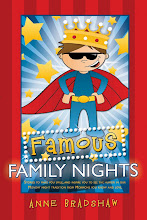I had the experience to learn a little about persuasive writing for advertising, press releases, websites, and such. The first important thing listed was personality, and the second, the ability to keep the reader interested in the topic so they will continue reading.
This was interesting to me, because, as someone who loves to write fiction, I have found that the top two ingredients that make a good novel are the same two things; characterization and a solid plot, by using the right words at the right time to keep the reader turning those pages.
Now, there are people who prefer plot driven books, and there are others who prefer character driven books. My personal preference is the character driven books, but that's not to say that you can have a weak plot and get away with it. They are both essential. But I feel so strongly about characterization, that I would say that it helps to move the plot along and creates an interest with the readers, a connection, so that they will keep reading.
But there are other important ingredients needed to help create characterization and move the plot forward. Two of them are:
1. Show vs. Tell
2. Dialogue
Here is an example of how using show vs. tell and dialogue can add to your writing, whether fiction or non-fiction, by helping to develop character or personality. But first, I'll relate a story using tell. (This is a true story, by the way, so I suppose you could call it non-fiction.)
The other night, while I was typing, my six-year-old asked me what nuttins were. I had no idea, but it turned out that he got the word from "I'm getting nuttin' for Christmas." I laughed to myself, cleared up the misunderstanding, and we gave each other a hug. He is so cute and funny.
Now, here is the same story showing how it happened, not merely telling that it did, along with dialogue to make the scene come alive, hopefully developing a bit of character:
I was sitting in front of my computer, working on my latest project. At least I was attempting to work. It was difficult with more interruptions than I would like.
There was a tap at my shoulder from my little boy. "Mom, what are nuttins?" Another interruption, but those eyes of his were so wide, expecting me to be wise enough to answer his question, that I really wanted to answer him.
"Nuttins? I have no idea." Maybe they were some kind of nutty muffin recipe. I would have to try it.
"But it's in a song." He started singing with that serious expression he gets on his face when he's concentrating. "I'm getting nuttin' for Christmas. Mommy and Daddy, are...oh, I forgot the word. Is it angry or mad?"
At this point, I was smiling. My work forgotten.
"Oh, it's mad," he said.
"The kid in the song is getting nothing for Christmas because he's been bad. But you are good, so you don't have to worry about that."
A grin lit up his face, and he threw his arms around my neck, squeezing me tight. I returned his squeeze with a kiss on his cheek. Merry Christmas, my little boy.
Whether you write fiction or non-fiction, I feel that adding a little personality to your words will keep the reader interested and they will want to keep reading. And if you have made it to these last words in my post, I'm hoping it was because you found it interesting enough to keep reading.
Merry Christmas!
Thursday, December 17, 2009
What Moves Your Words?
Posted by Jillayne Clements at 8:48 AM
Labels: characterization, dialogue, plot, show vs. tell
Subscribe to:
Post Comments (Atom)

















3 comments:
Great way to illustrate show vs tell. One is longer, but way more engaging!
Great example. Thanks for sharing, and cute, cute kid.
This was such a great explanation and so easy to understand. Thank you. You really made your point come to life.
Post a Comment